Chocolate, music and research fuel Martian life at HI-SEAS – Commander's report: sol 6
The Valoria 3 crewmembers have embraced their new Martian life and created a home out of HI-SEAS filled with chocolate smells, rap music and research experiments.

Dr. Michaela Musilova is the director of the Hawaii Space Exploration Analog and Simulation (HI-SEAS) program, which conducts analog missions to the moon and Mars for scientific research at a habitat on the volcano Mauna Loa. Currently, she is in command of the two-week Valoria 3 Martian mission and contributed this report to Space.com's Expert Voices: Op-Ed & Insights.
Commander's report for the Valoria 3 Martian mission at HI-SEAS
Sol 6 (Aug. 18, 2021)
The smell of chocolate and sound of rap music started to fill the habitat this afternoon. It was just another typical day on "Mars." My crewmembers quickly embraced their different roles on our team. I don't just mean their mission roles, such as the engineering officer and the science communication officer, but also the equally vital roles of cooks and dishwashers. We now have a very nice system of certain crewmembers cooking while the others clean up. The chefs have even prepared a meal plan for most of our mission, to make sure we ration our food correctly.
When I first started taking part in analog missions seven years ago, mission organizers and commanders tried to force crewmembers to cook and clean within a scheduled system. While that may be a fair system, it usually led to crewmembers exchanging roles, and some were even miserable when they had to take on a role they were not comfortable with. In my experience as a commander, I have found that it's best for people to naturally gravitate toward a role that comes naturally to them. Then, together as a crew, we find a way to make sure everyone puts equal amounts of work into mission tasks.
We have two great chefs on our Valoria 3 crew. The whole crew is grateful that they have taken on these roles. We never have to worry about what is on the menu or whether we will have enough food to eat, as they have very kindly taken on that responsibility. I'm no good cook myself, so I prefer to contribute as a dishwasher and cleaner of other parts of the habitat. That includes taking care of our compost toilets. It's not a particularly fun or pleasant task, but I like to take one for the team, since I know that it would be daunting for others.
Sometimes, the smells coming from the kitchen are very distracting, like when Crew Operations Officer Elisha Jhoti makes dairy-free brownies using our freeze-dried food. I can barely focus on what I'm writing when that smell lingers in our tiny Martian habitat. Sadly, the opposite is also the case: If someone burns something or a crewmember's experiment releases chemical smells inside HI-SEAS, it's very difficult to vent those out. We have to turn on all of our fans, but even then, it can take hours for the smells to dissipate.
Get the Space.com Newsletter
Breaking space news, the latest updates on rocket launches, skywatching events and more!
The rap music is part of our cleaning routine. We have found that playing music that the crew cleaners enjoy makes the task much easier. That's why we take turns choosing songs and playlists when doing chores. It also makes everyone feel more at home and gives us a great opportunity to bond over similar music tastes. I'm very happy that there are a couple of other metalheads on our crew, or else I never would have played my music aloud ;).
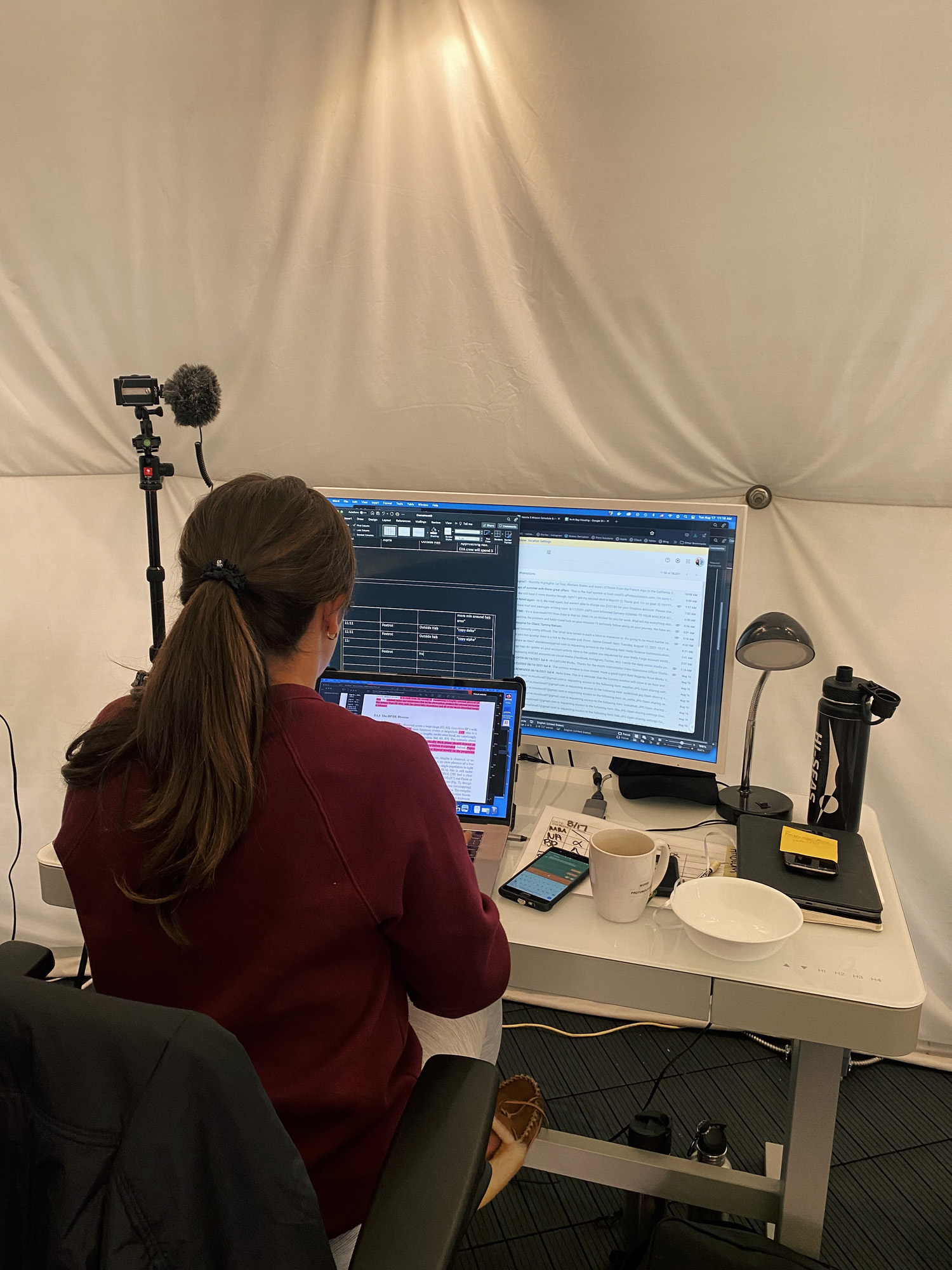
At this point, we're getting close to being halfway done with our mission. Each crewmember has made quick progress with their individual research projects. I gave my crewmembers training on the mission, geology and spacewalks over the first few days, and now they're going on spacewalks alone. However, some spacewalks, or "Marswalks," had to be rescheduled because of raging "dust storms" — that is, rain and fog on the volcano Mauna Loa, where HI-SEAS is located.
Our science communication officer, Sarafina El-Badry Nance, has focused the majority of her time on delving into literature to inform her thesis and Martian research on supernovae. On her first Marswalk, she was able to survey the surrounding Martian terrain for ideal spots to use her SciAps Laser Induced Breakdown Spectrometer (LIBS) to analyze the volcanic rocks and correlate them with her supernova research. Although subsequent Marswalks have been postponed due to dust storms, she looks forward to clear skies, when she can begin using the LIBS at length and do some astrophysics and geophysics on Mars.
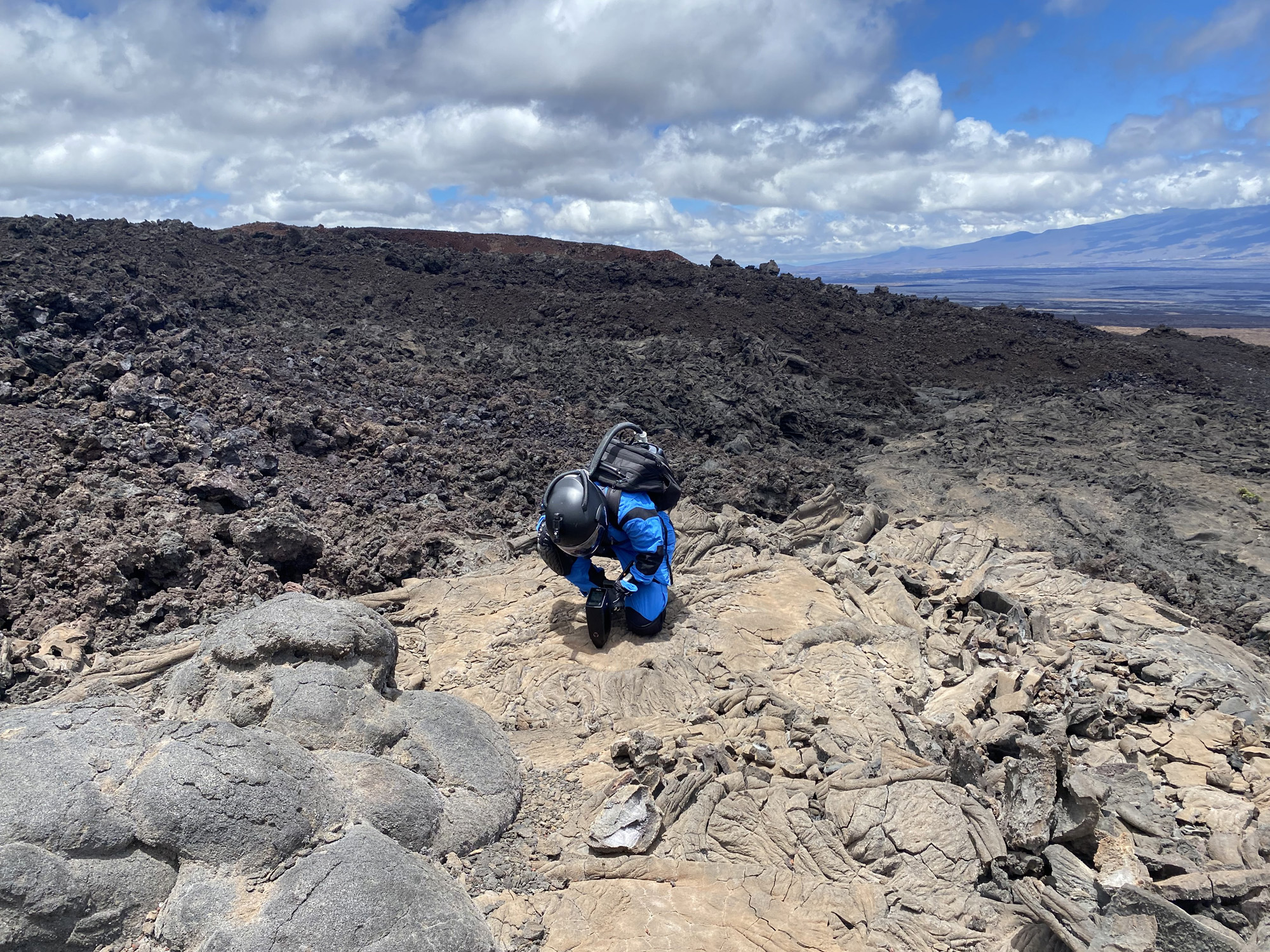
Within the habitat's lab, Bioengineering Officer Nils Averesch successfully deployed his bioreactors. He is cultivating microbes inside them that can turn greenhouse gases into biodegradable plastics, as a part of a biomanufacturing demonstration for the NASA Space Technology Research Institute's Center for Utilization of Biological Engineering in Space. So far, Nils has collected biomass from one of the three reactors. He will attempt to extract the bio-polyesters from the biomass, which could be used as feedstock for the 3D printer at HI-SEAS to manufacture useful objects, such as tools, molds for cooking and baking, containers and essentially most things that you can 3D print using plastic these days that's relevant to space missions.
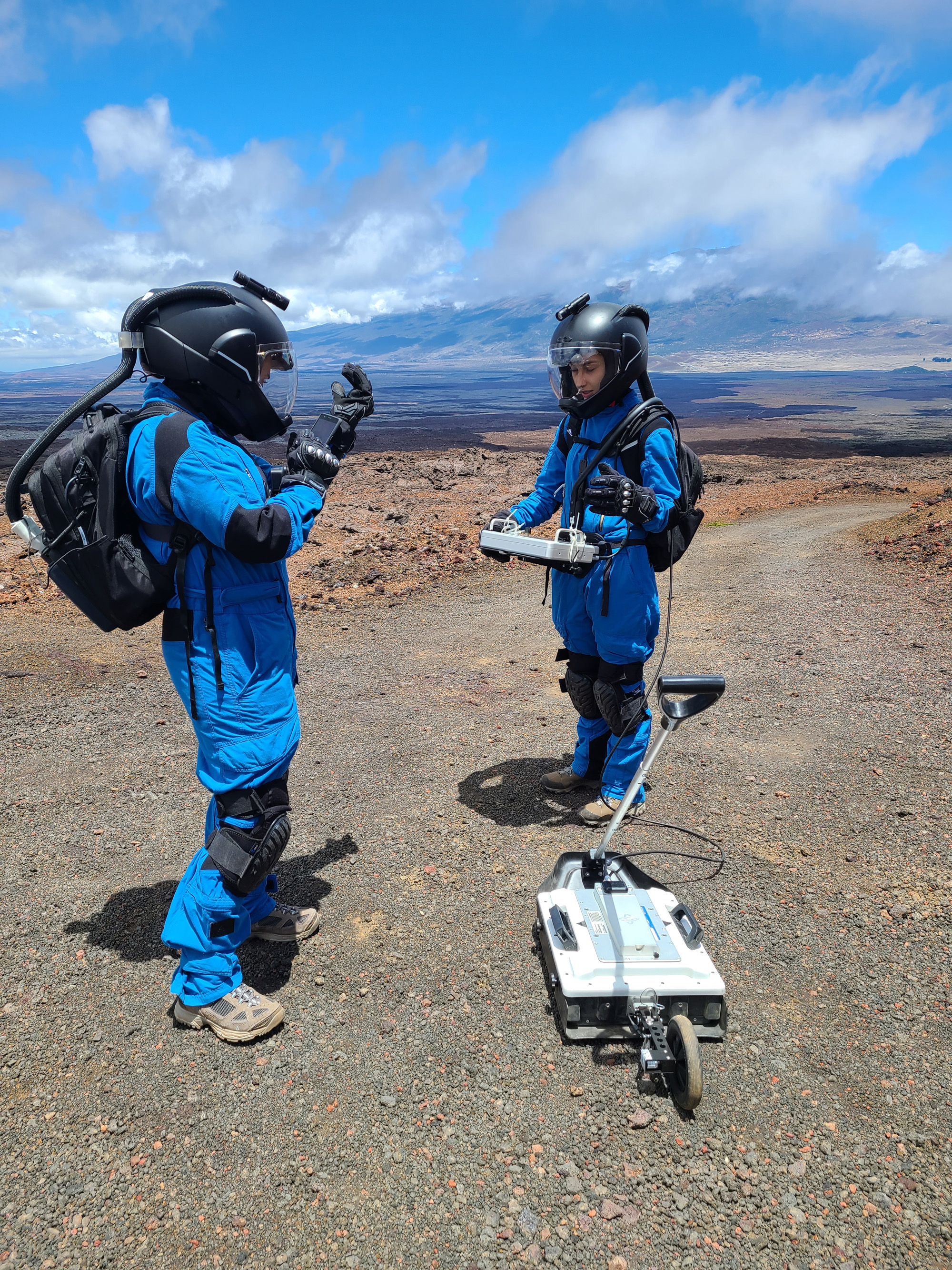
When we got a break from the dust storms, Elisha, with the help of Engineering Officer Britaney Phillips, carried out several ground penetrating radar surveys across a nearby fissure. A fissure is a linear volcanic vent through which lava erupts. It can leave interesting geological structures behind after the eruption, which is one thing Elisha was trying to detect. Elisha and Britaney managed to detect different rock layers, but Elisha won't be able to process the data until after returning to Earth.
Apart from helping Elisha with her project, Britaney has been hard at work getting familiar with the habitat's life support systems and Marswalk equipment. Britaney also kindly built a trampoline for one of my outreach and educational student projects. This project is part of the nationwide Mission to Mars high school student competition that I have been running in Slovakia for the past few years. Britaney has also begun giving lessons for her students back on Earth, which includes bringing her reversible PEM fuel cell out on a Marswalk. Utilizing the sun and a small solar cell, Britaney produced 8 mL of H2 during their quick Marswalk before the dust storms threatened their operations.
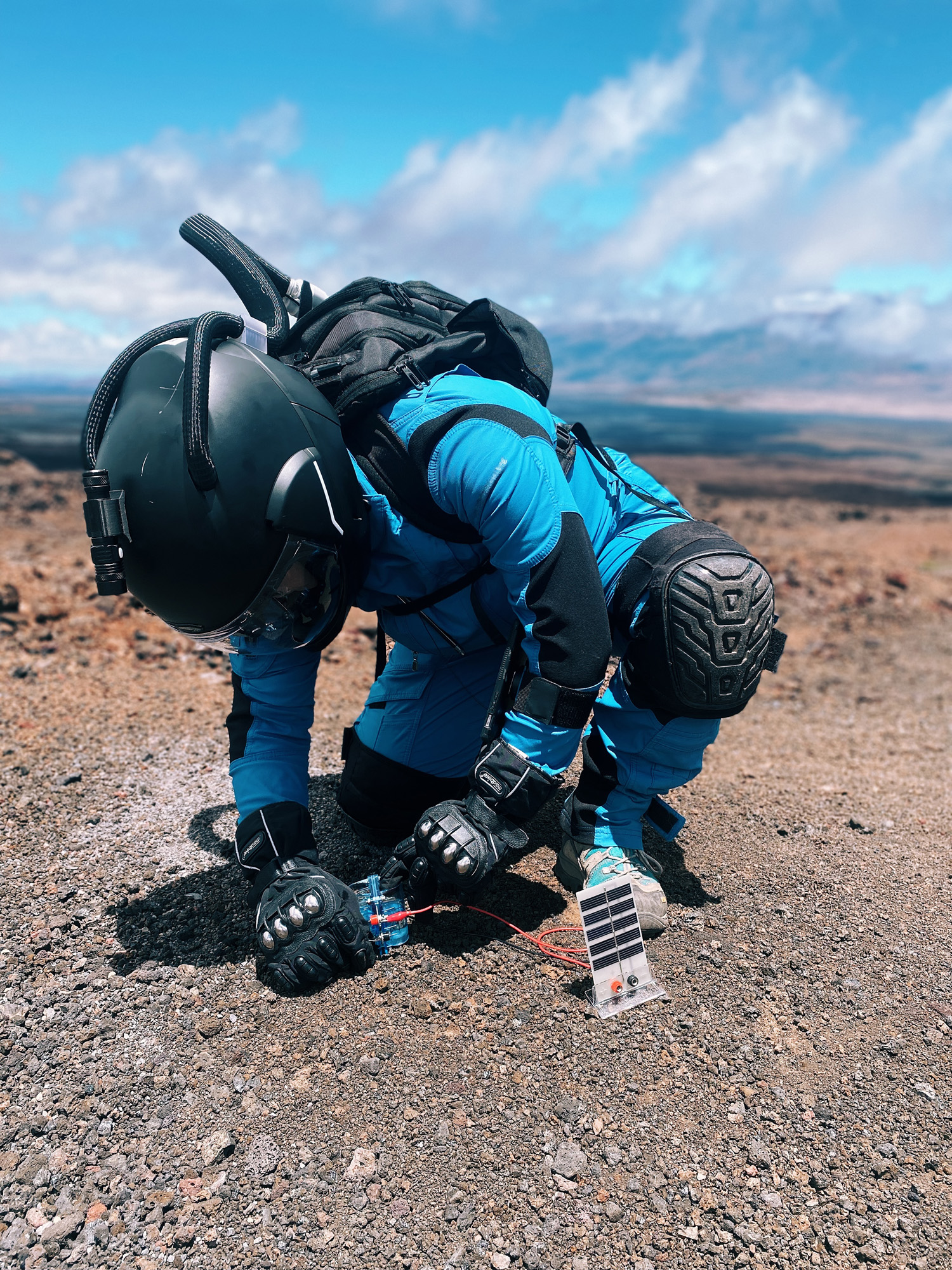
Commander Musilova signing off to go check out the source of the chocolate smell; it's too good for me to stay behind the computer, analyzing my astrobiology data sets. I'm sure I'll perform my biological and geological analyses much faster with some delicious Martian baked goods to motivate me ☺.
Follow Michaela Musilova on Twitter @astro_Michaela. Follow us on Twitter @Spacedotcom and on Facebook.
Join our Space Forums to keep talking space on the latest missions, night sky and more! And if you have a news tip, correction or comment, let us know at: community@space.com.
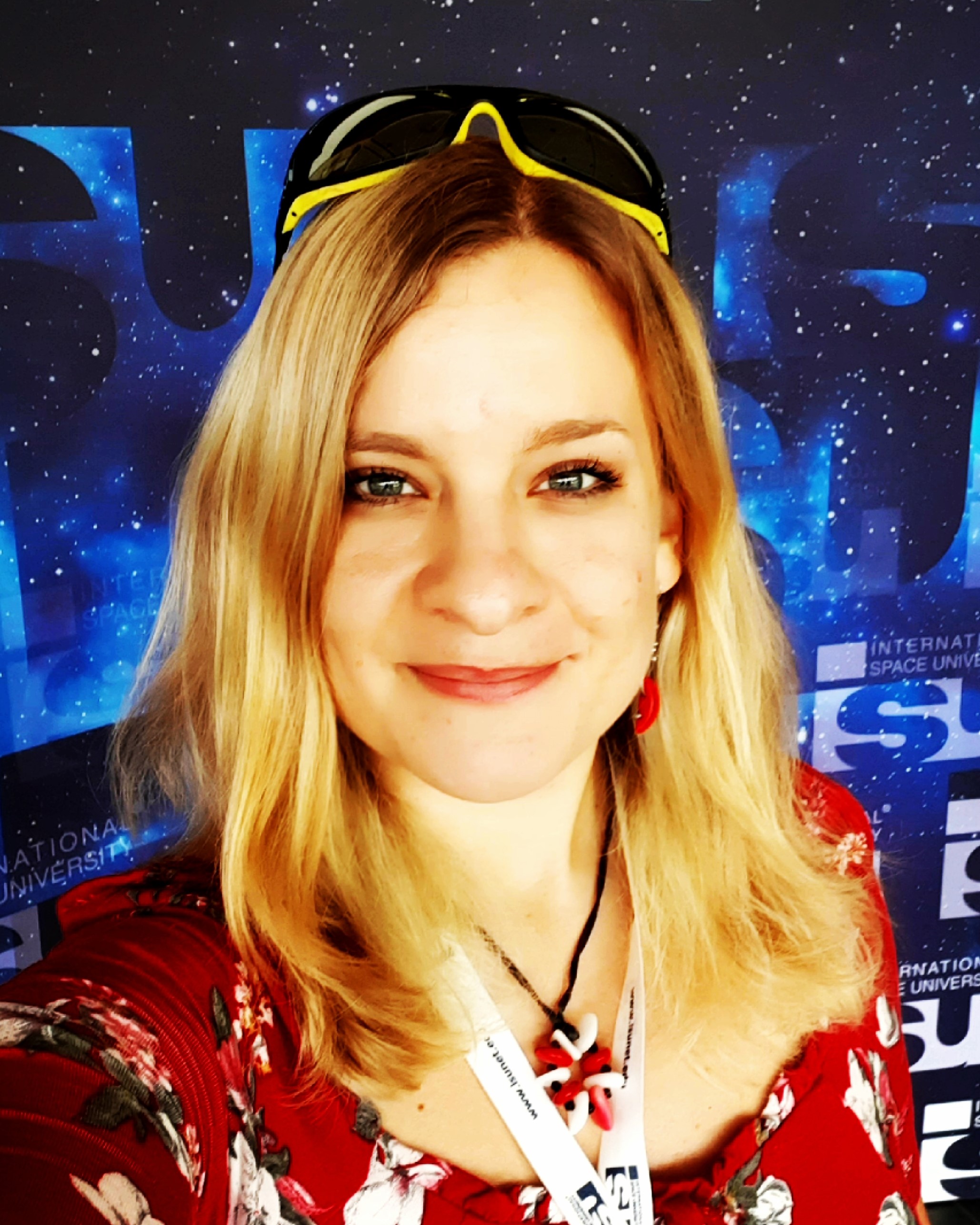
Dr. Michaela Musilova is an astrobiologist with a focus on life in extreme environments. She has a PhD degree from the University of Bristol and is a graduate from the International Space University's (ISU) Space Studies Program. Michaela's space research experience includes working at the NASA Jet Propulsion Laboratory, University of London Observatory, Canada-France-Hawaii Telescope, on NASA's and the U.K. Space Agency's MoonLite project, being an analogue astronaut and Commander of numerous simulated missions to the moon and Mars at the HI-SEAS station in Hawaii, and at the Mars Desert Research Station in Utah. Michaela is currently the Director of HI-SEAS, as part of the International MoonBase Alliance. She is also a visiting Professor at the Slovak University of Technology, Vice-Chair of the Slovak Organisation for Space Activities, Adjunct Faculty at ISU and the Senior Research Adviser for Mission Control Space Services Inc.
She has received numerous prizes and grants, including the Emerging Space Leaders Grant from the International Astronautical Federation (2016) and the Women in Aerospace – Europe Young Professional Award (2016), and she was selected as one of the most promising 30 under 30 by Forbes Slovakia (2015). Michaela is also actively involved in the Duke of Edinburgh's International Award, as a patron of the program in Slovakia and an Emerging Leader Representative for Europe, Mediterranean and Arab states. Furthermore, she enjoys participating in STEAM outreach activities from teaching at schools, giving public presentations, to working with the media and more, as well as encouraging people to pursue their dreams. For instance, she is an Advisory Board Member of the STEM Punks immersive programs for students and teachers.









